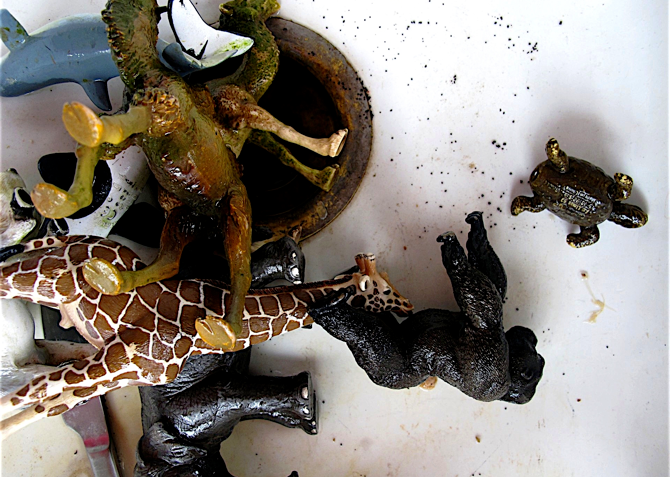ZOËLAB: THE LIFE AS ART BLOG
To Do Collage
Indirectly inspired by assignment #56 from Learning to Love You More, mentioned in art world post, I made a collage. It started out free style--I leafed through some old magazines, cutting out images that had significance to me, but instead of being a portrait of my friend’s desires (assignment #56), it ended up being a visual to do list.
ZOELAB DAY 73
Indirectly inspired by assignment #56 from Learning to Love You More, mentioned in art world post, I made a collage. It started out free style--I leafed through some old magazines, cutting out images that had significance to me, but instead of being a portrait of my friend’s desires (assignment #56), it ended up being a visual to do list. As I picked out the images, I realized the ones that had significance to me reminded me of things that have been floating around in my head have I have been needing/wanting to do. I added the letter-punched red labels after the fact, simply because I had just rediscovered the punching gun that Lucas found at a thrift store when I opened my hot pink plastic 1970’s Samsonite suitcase, which is the holder of my vast collection of collage papers, fake tattoos (one made by artist Kiki Smith!), and stickers. (I still have a sticker collection, and stuffed animal collection and I’m nearly 40. I have gotten in heated discussions with my 3 year old son over whose Snoopy is whose.) How fun it is to reconnect with all those wonderful tools. I really recommend trying the visual to do list. I had a lot of fun with it. It loosened the pressure I normally feel when I make a written to do list. It would be interesting to make one that is pure image, with no words. Perhaps the images would start to have an unconscious affect on us, subliminally inspiring us to perform the tasks on the do list. What if the tasks on the list were significantly more boring than the ones illustrated above? That would be the real challenge, making boring tasks like “pay water bill” look enticing to ourselves.
Try making a visual to do list and let me know how it goes. Send me your images!
another museum adventure
The museum allows photography, the general admission is free, and it also offers many interactive resources as a way to engage in the art. Though out the time I was in the museum, I periodically welled up with emotion because I was so inspired by the space and the art, and after two years of motherhood, it felt like the beginning of my return to art.
To continue on the theme of photographing museums, I want to share some images that I took last August in my new favorite museum, The Tate Modern in London. Lucas, Emilio and I took a grand European tour that summer and when were in London visiting our friends, I got to spend a very happy dayalone, wandering around the museum, which shows exciting and eclectic contemporary and modern art collections, in a very impressive industrial space. The museum allows photography, the general admission is free, and it also offers many interactive resources as a way to engage in the art. Though out the time I was in the museum, I periodically welled up with emotion because I was so inspired by the space and the art, and after two years of motherhood, it felt like the beginning of my return to art. I had forgotten to bring my journal with me, but I had my ipod, which has a voice recorder. Here is an excerpt from what I said:
“I also realized that being at this museum alone is what I really needed because I have been depressed and lost and disconnected.... this happens to me in life and it makes sense but, it’s been hard being a mom and being a wife because I feel like I have no core and I’ve sort of lost track of the other things I care about, my passions. I realize that... I unconsciously think: ‘my life is over, now that I’m a mom that’s all I’m ever gonna be and I won’t ever have time to do any of the other things that I love to do.’ And whenever I have a few minutes or hours it’s not so easy to reconnect with who I was, or who I would like to be... Believing in art as a religion, not just something to do, but it being a deepest expression, not being lost in the world of practicality.”
Here are some photos I took that day of people entering the museum in its great hall--the last one is a video.
museum adventures
To continue with my insider/outsider perspective of the art world theme, and to honor the photo from yesterday’s post, (which was taken at Mass MoCA) I want to share some photographs that I have taken in some of my favorite places to photograph: museums. There are not very many museums in the world that will let you take photographs inside them. But there are a few. Taking pictures is is a way to have a more interactive experience when I go into a museum. Instead of just being an observer, I become participant. I go from outsider to insider. But, in the end, I feel even more like an outsider.
De Young in San Francisco
ZOELAB DAY 71
To continue with my insider/outsider perspective of the art world theme, and to honor the photo from yesterday’s post, (which was taken at Mass MoCA) I want to share some photographs that I have taken in some of my favorite places to photograph: museums. There are not very many museums in the world that will let you take photographs inside them. But there are a few. Taking pictures is is a way to have a more interactive experience when I go into a museum. Instead of just being an observer, I become participant. I go from outsider to insider. But, in the end, I feel even more like an outsider.
My interest in this activity started when I was nineteen years old and visited the Musée d’Orsay in Paris. The Musée d’Orsay was a railway station (built at the turn of the 20th century) that opened as a museum in 1986. It is a beautiful space, and when I first visited there, they allowed photography. In those days, I used a 35 mm Nikon FG. I have since lost all those photos (they were actually stollen from my darkroom drawer in college). I loved photographing the art, with the light glowing down from the magnificent dome glass ceiling. I returned to the museum last year with my French aunt, (twenty years later) excited to re-experience the museum with my digital camera, and found out that they no longer allowed photography. Needless to say, I was very disappointed. Since then, one of my other favorite museums to take photos in is Mass MoCA (Massachusetts Museum of Contemporary Art.) My parents live an hour away, and every year when I visit them, we make a family pilgrimage. Taking photos there has become a big part of the ritual, especially between me and my brother.
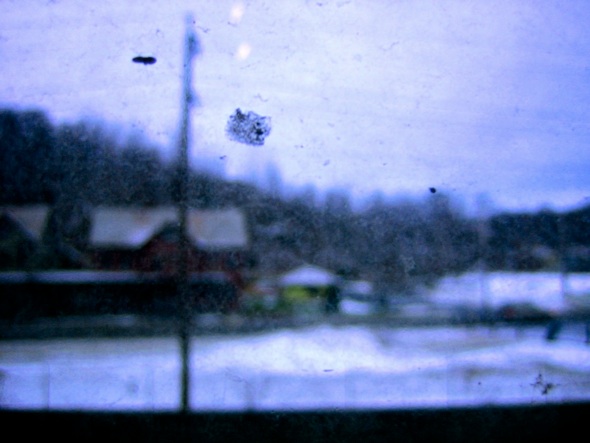
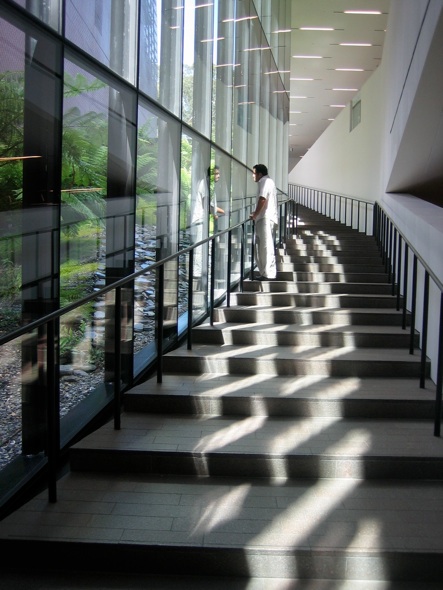
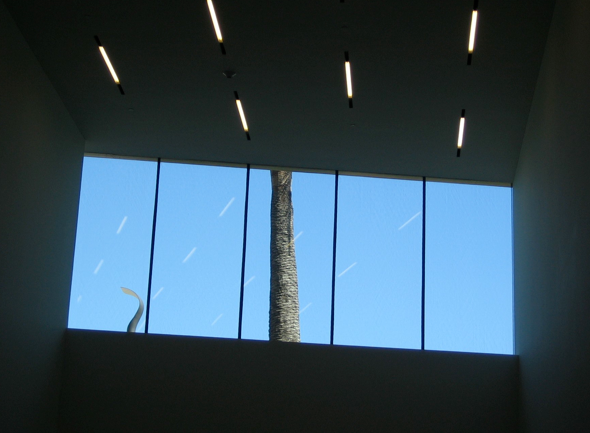
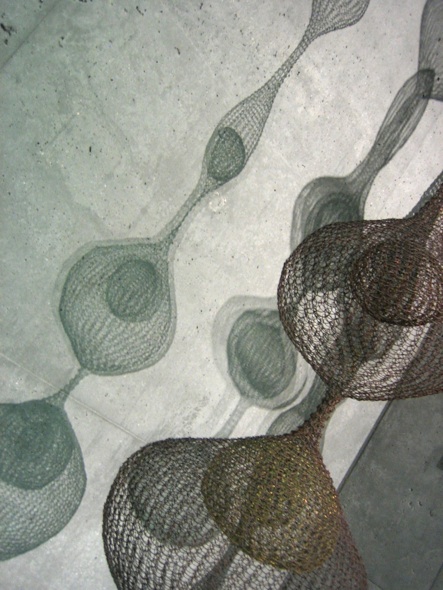
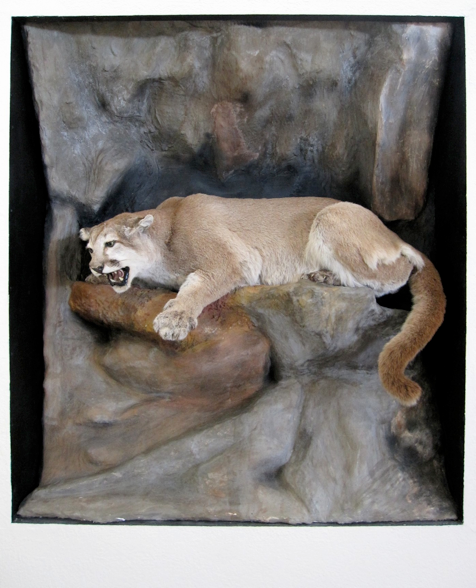
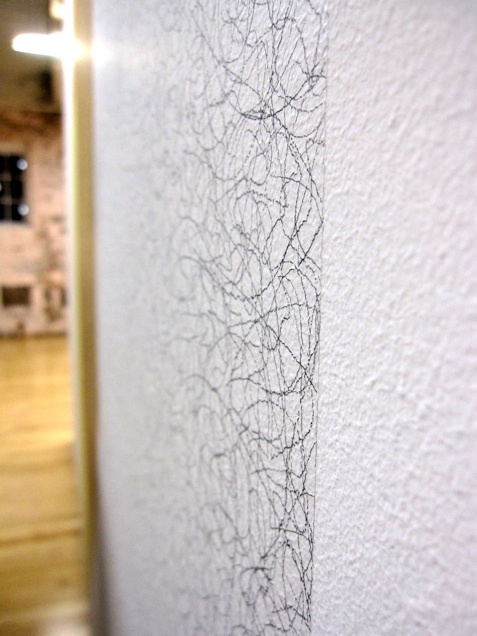
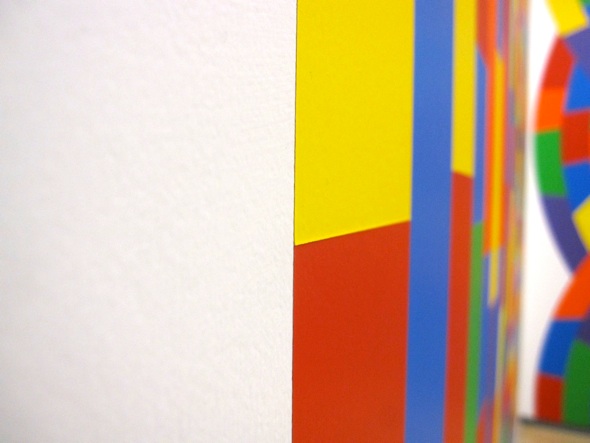
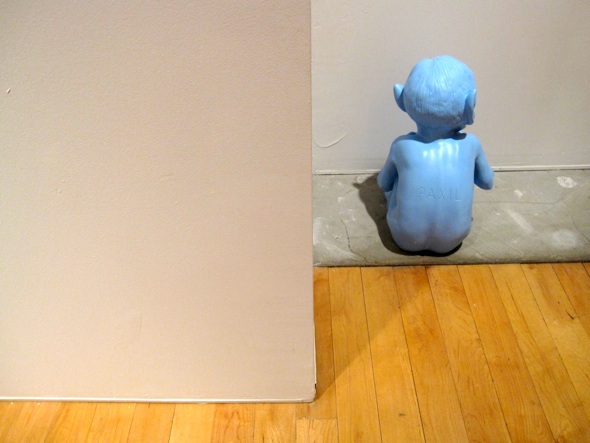
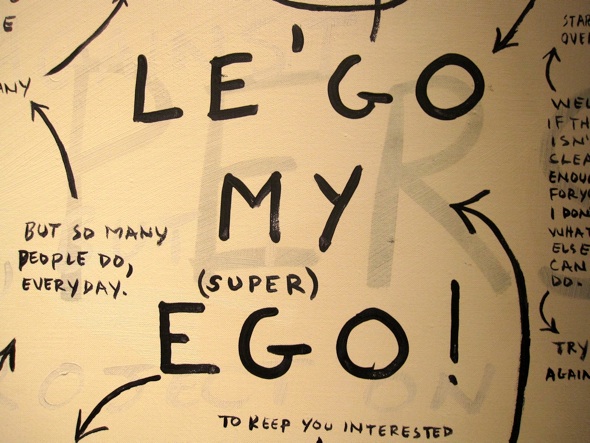
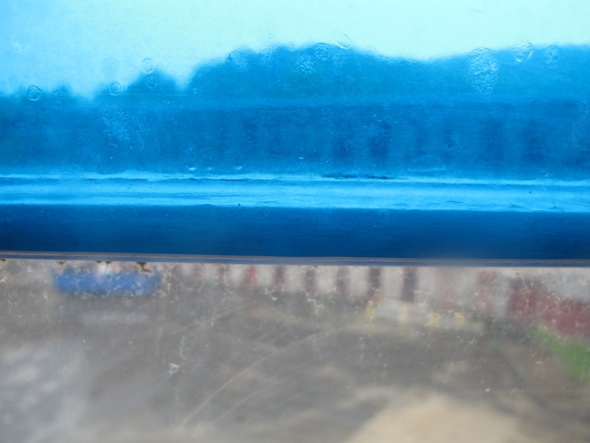
You may ask: is this intellectual property infringement? And the honest answer is: I don’t know. But I do find it interesting to think about: seeing art, and the space that contains it, from a different person’s perspective. Not necessarily as the artist, or the museum, intended. Does that photograph of art become art or is it a sneaky reproduction?
Art World: Outsider/Insider, Part Two
Making art was no longer about ego gratification and being clever, but it became a soul need. It became a way of living. A way of making meaning out of life, so that I could have a more playful, creative relationship with myself, and with others. It was a way to take myself less seriously, but at the same time take my feelings more seriously. I found something I really believed in. Making art in this way is magical, deep and satisfying.
ZOELAB DAY 70
Meanwhile, I was going graduate school school to become an expressive arts therapist. I thought of it as the ideal career for someone like me. I could continue to express myself in all the varying art forms, free from the constraints of making money within that context, and at the same time, I could make a living as an expressive arts therapist. Through my three years of school, and two years (one year overlapping with school) working as an expressive arts therapist, I developed a new relationship to the arts. Making art was no longer about ego gratification and being clever, but it became a soul need. It became a way of living. A way of making meaning out of life, so that I could have a more playful, creative relationship with myself, and with others. It was a way to take myself less seriously, but at the same time take my feelings more seriously. I found something I really believed in. Making art in this way is magical, deep and satisfying. However, as I headed deeper into the professional world of psychology, with its licensing hours, ethical codes and boundaries, I started to feel uncomfortable. I asked myself is this what I really want? I started to find myself feeling less whole, and more split. The connection I had with being an artist in the world started to slip away, but I wasn’t willing to give it up. I wasn’t willing to put it into hiding. In an expressive arts therapy based desire to integrate this split between the Professional and the Artist, I came up with an idea for a sitcom character--an untrained working therapist, who was very unprofessional, with very poor boundaries because what she really wanted to do was to be an artist. Every week she had a new fantasy, and as she sits with clients she fantasizes about her other life. I did not make the show, and we moved to Mexico soon after. (Since then I have been developing the show within the new context of Baja, and plan to start shooting in 2013).
It wasn’t until last year, when I was planning workshops for Art For Life, my organization that I am building in Mexico, where I teach cultivating creativity workshops and do creativity coaching, that the realization came to me. What if the work I do helping people to access their creativity IS art in itself? After all, this could be a form of art as social practice. When I think about it, it is not so different from what an expressive arts therapist is trained to do. With expressive arts therapy, “the work” or the therapeutic relationship is private, and therefore personal only. But with social practice art, “the work,” while still just as personal, becomes public, and therefore universal. In this way, the work benefits not only the teacher/therapist/artist (me) and the participant/student/artist, but also, the public, who witnesses the interaction (whether through recordings, or as a live audience.) Another important difference between expressive arts therapy and social practice art is the context, and the language of aesthetics. My goal is to make Art For Life (its teachings and experiences) relevant in different contexts, using distinct languages of expression. Some workshops will be relatable to people with no arts training, while some will behelpful to people who are fully engaged in the art world. I am interested in connecting the gap between the sophistication and internationality of the art world and the depth and empathy of the expressive arts therapy world. The art world can be kind and the expressive arts world can be hip.
The internet is an integrative space that can hold the kind of approach I am speaking of. This blog is, in itself, my foray into social practice. My goal is to make it more interactive--so that it feels more of a mutual experience. I want to share one of my favorite examples of participatory art--the project by Harold Fletcher and Miranda July called Learning to Love You More. If you are interested in social practice/participatory art, please write to me and share your knowledge, as this is just a starting place for me. I have been sharing with you a a new thing, a delicate thing. The first seed of a possible direction of my ever-evolving desire to integrate my dreams, passions and skills, so as not to feel compartmentalized, so that I may live the enchanted life of my dreams, and to help others live their creative dreams. Ultimately, to live life as creatively as possible, to live life as art.
Art World: Outsider/Insider, Part One
I have always had an ambivalent relationship with the visual Art World. Even though my mother is a painter, with an MFA in art, and I was a Studio Art major in college and grew up in New York City, getting to go to some of the finest museums and galleries in the world and I have dedicated to my life to the study, practice and teaching of the arts, there was a clear moment when I decided that I would not become a professional visual artist in the traditional sense. I knew, somehow, that I did not want to make art to sell in museums or galleries. I have had a few pieces in shows here and there, but really, it has not been my goal. This project ZOELAB is the most I’ve put myself out there as an artist in my life.
ZOELAB DAY 69
I have always had an ambivalent relationship with the visual Art World. Even though my mother is a painter, with an MFA in art, and I was a Studio Art major in college and grew up in New York City, getting to go to some of the finest museums and galleries in the world and I have dedicated to my life to the study, practice and teaching of the arts, there was a clear moment when I decided that I would not become a professional visual artist in the traditional sense. I knew, somehow, that I did not want to make art to sell in museums or galleries. I have had a few pieces in shows here and there, but really, it has not been my goal. This project ZOELAB is the most I’ve put myself out there as an artist in my life.
The art world, with its erudite sleekness and exclusivity, is both a real and conceptual place to which I have felt intuitively I don’t belong. And yet, there is a paradox. Because I also feel a connection to the art world, I understand its language, but yet something has been missing. I love to go to museums and galleries. I love to read art criticism (or used to) and have heady discussions with artists about aesthetics and contexts. Many of my friends are artists who are entrenched in the art world. And yet, since I was a small child, art has always meant something else to me, more personal, less categorizable, something in the realm beyond judgment. I felt that art belonged in a different context than a museum or gallery, and yet I loved visiting those very places. And even if I can participate in the culture around art with which I am so familiar, it somehow does not include me. Perhaps it is because art and commodity don’t go together for me. Perhaps it is because even though I love visiting museums, they still feel like places of restriction and institution. Perhaps this is also because I have not yet found the right medium. That is... until now.
I have dabbled with the idea of performance art. I can get excited about conceptual art. I have taken a lifetime’s worth of photographs, and yet, I have no interest in putting them in galleries. But, there is one art movement that is gaining more and more recognition that genuinely calls to me. It is an art movement that is accepted in the art world, and yet, by its definition, is difficult to commodify. It does not have a clear title, but is often referred to as social practice or participatory art. From Wikipedia: “Participatory art is an approach to making art in which the audience is engaged directly in the creative process, allowing them to become co-authors, editors, and observers of the work. Therefore, this type of art is incomplete without the viewers physical interaction. Its intent is to challenge the dominant form of making art in the West, in which a small class of professional artists make the art while the public takes on the role of passive observer or consumer, i.e., buying the work of the professionals in the marketplace... It may also be categorized under terms including relational art, social practice, community art, and new genre public art. Folk and tribal art are also considered to be "participatory art" in that many or all of the members of the society participate in the making of art. While a painter uses pigment and canvas, and a sculptor wood or metal, the social practice artist often creates a scenario in which the audience is invited to participate. Although the results may be documented with photography, video, or otherwise, the artwork is really the interactions that emerge from the audience's engagement with the artist and the situation." Here is a quote I found by Andy Horwitz on the site culturebot from his essay on social practice in the context of performance. “...the emergence of social practice as a trend speaks to two fundamental shifts in American culture: one, a broad re-thinking of the role of the arts in society and two, a rejection of corporate capitalism’s demand that citizenship is predicated on being a consumer, not a creator or empowered participant in civic life.” When I first heard about “participatory art” something in me awakened and I knew I had discovered an art form for me. I love its emphasis on altruism and its stance against commodification. Also, I am interested in playing with outsider forms that question the institutional form.
To be continued...
Turning Against The Self
Sometimes we get what we want, and we rejoice.
Sometimes we get what we want, and fear makes us recoil.
Sometimes we don’t get what we want, and we learn and grow.
Sometimes we don’t get what we want, and we turn against ourselves.
ZOELAB DAY 68
Buddha was said to have said:
“not getting what you desire and getting what you desire
can both be disappointing.”
Sometimes we get what we want, and we rejoice.
Sometimes we get what we want, and fear makes us recoil.
Sometimes we don’t get what we want, and we learn and grow.
Sometimes we don’t get what we want, and we turn against ourselves.
There are times when my heart opens up with desire. Especially around my birthday. But if things don’t go my way, sometimes I identify with the child in me, and let it be about the ego. I tell myself a story that makes it all about me. This is how children are in the world. Not only do they easily get disappointed, but they personalize, they think there must be something wrong with them, and that’s why they didn’t get what they wanted. As the story that I tell myself continues, as a balm for the disappointment, I see the cause to be direct action against me. As if the world wanted it that way. And then, instead of soothing the hurt child, I turn against her, unconsciously aligning myself with my projected view of the world. This is perhaps an adolescent response--thinking the world is paying attention to our disappointments. And that we are the only ones feeling that way. When really, the world is in a constant flux of a totality of disappointments and triumphs, as well as everything beyond.
You may be wondering, what kind of disappointments am I speaking of? They are the same disappointments we all feel in a daily way: we didn’t receive the phone call we were expecting, our favorite tea cup broke, our life doesn’t look quite like we want it to. But, when I really think about it, the greatest disappointment is usually in myself. Ultimately I am disappointed by my own abandonment--by not taking care of myself, not keeping my life in balance, not giving myself enough rest, not taking care of my own needs. It is a disruption of function within the inner family of the psyche. It is easy to blame the world, but it is impossible for the world to take responsibility. It is more effective, and far more empowering, to take responsibility for my own feelings, and my own actions or lack of actions. Of course sometimes events happen that are beyond our control, but still, we always have a choice in how we respond. And in how we care for ourselves. Often, when the heart is vulnerable and full of longing, it is a sign that the inner child is needing attention, and the inner adult self, whose job is it is to take care of the child, is wrapped up in the outer world that seems to have no room for those quiet soulful needs.
However, that is not the end of the story. Even after I’ve caused further suffering from turning against the little self while it already feels vulnerable, I realize that as soon as I start to have compassion again, and show kindness, the little self didn’t actually come to any permanent harm. It never seems too late to show kindness. Again, like a child, the self is resilient. It can endure great suffering, and responds well to compassion. It is soft, yet strong, like a jelly fish. Maybe it stings a little in self defense, and instead of breaking when poked, it gives just a little, and then its body fills back into the space after the aggravator is gone.
I notice with three year old Emilio, whose ego is not yet fully formed, that he does not yet personalize his disappointment. If he feels disappointed, which sometimes happens several times a day, his response sometimes is to go into arage, but more and more often, his response is to go into a corner of the room and hide. He goes under a blanket or a desk or a table. Perhaps this is how he tends to the hurt part of himself, or perhaps he is ashamed. Or perhaps a little of both. Either way, after only a few minutes of hiding, he returns to his world of play, bounced back in full recovery (just like the jelly fish.)
Another way to see this cycle of separation and reunion is as a spiritual longing for connection with the The Self. Here is a poem by Rumi to illustrate:
Love Dogs
by Rumi
One night a man was crying,
Allah! Allah!
His lips grew sweet with the praising,
until a cynic said,
“So! I have heard you
calling out, but have you ever
gotten any response?”
The man had no answer to that.
He quit praying and fell into a confused sleep.
He dreamed he saw Khidr, the guide of the souls,
in a thick, green foliage.
“Why did you stop praising?”
“Because I’ve never heard anything back.”
“This longing
you express is the return message.”
The grief you cry out from
draws you toward union.
Your pure sadness
that wants help
is the secret cup.
Listen to the moan of a dog for its master.
That whining is the connection.
There are love dogs
no one knows the names of.
Give your life
to be one of them.
GeGe & MeiMei, Part Two
The other lessons that came from Alexander were cultural. One day, sometime in the mid eighties, while waiting for the bus in Brooklyn, Alexander turned to me and gravely stated: “Promise me, Zoë, that you will never wear designer jeans.” I asked him why, and he said, “just promise me.” So I promised him.
Our feet at the beach in Rio 1999
ZOELAB DAY 67
The other lessons that came from Alexander were cultural. One day, sometime in the mid eighties, while waiting for the bus in Brooklyn, Alexander turned to me and gravely stated: “Promise me, Zoë, that you will never wear designer jeans.” I asked him why, and he said, “just promise me.” So I promised him. I didn’t figure that one out until a few years later. The ironic thing is the only designer jeans I have ever owned is a pair of turquoise Calvin Klein jeans that I had picked out and Alexander bought me as a birthday present three years ago.
And then there was the time I was sitting in my room, and Alexander walked in with a new record. It was David Bowie’s Changes. He showed it to me, and I asked him who it was, and he said David Bowie. I told him I thought he was a girl. And he said, well he’s not. Then he put the record on and I was transfixed.
When Alexander was in college, he majored in religion and philosophy. He was very interested in Buddhism, as well as other eastern thought. I was a senior in high school at the time, and curious about Buddhism--he recommended that I read the book “What the Buddha Taught” by Walpola Rahula. I read it and recognized what the buddha taught to be truth. But I also knew that I was not ready to transcend my ego. I knew I was still addicted to the highs and lows that ego attachment brings, and that I had I would return to Buddhism later in life.
A year later, I was to go to Beijing for a summer with my high school Chinese class to do a summer course in Chinese language. While I was preparing for my trip, and starting to feel anxious about going so far away, Alexander tried to give me courage. He said, I have three pieces of advise for you about your time in China: “1) Don’t bring your walkman. 2) Speak as much Chinese as you can. 3) Stay aware.” I actually can’t remember if I followed the first piece of advice, but I did follow the second one. I pushed through my fears, and struck up conversations with Chinese people as much as I could. I even made some Chinese friends. But number 3 is a piece of advice from Buddha, via Alexander, that has been with me my whole life. The experience of being aware, being the observer, not only of others, but of my own thoughts, actions and interactions, has led to much wisdom and relief from suffering. It is a wonderful piece of advice for teenager (who can be so self conscious).
During a summer visit from college, my brother introduced me to yoga. This was still the 1980‘s when people still aerobisized. I didn’t know anyone else who did yoga. He would practice his poses on the porch of our house in the Berkshires daily, and I found it fascinating to watch. I took black and white photographs and wrote a poem about it called Yoga in Earshot. A year later, I bought a book on yoga, and started doing headstands in college. I have continued to practice for all these years.
In high school, the influence that my brother had on me made me feel different from people, and sometimes alienated. He initiated me into the world of cultural criticism and spirituality. He inspired me to be rigorous in my thinking and to question everything. He became an anthropologist, sublimating his personal cultural alienation into a discipline of social science. And I became a therapist/artist, sublimating my sensitivity and emotionality into artmaking and helping others.
We have visited each other or traveled together in many parts in the world, including: Kenya, Tanzania, France, China, Vietnam, Brazil, Holland and Mexico. And now, in some ways, we are going in opposite directions--I have become a sort of society drop out, while at the same time using my memory and knowledge and personal experience to engage in a cultural dialogue. And him, a professor and writer in Amsterdam, living an urban plugged in life with all the bourgeois trappings. We are each going our own paths, influencing each other along the way. As I go, I continue to see all the little and big ways that Alexander’s early lessons have stayed with me. And now, more than ever. I probably won’t ever use Algebra or Latin ever again, and I do hope to play more basketball, but as I look at my life, I am continually reminded of his ideological and intellectual influence. He helped build my school confidence, and encouraged my development as an emotional spiritual intellectual. To illustrate his kind of influence, I will end with an excerpt from the personal statement I wrote for my undergraduate college application, which was an excerpt from my journal (which had only one section.)
And now I know everyone needs a voice, each person has her own but she needs another to feed on. Another to accept hers and expand its possibilities, to go beyond what is expected. I know that no one at high school is that voice. Alexander is that voice. And even though I have discovered his voice is not always perfect, not always consistent, it is alive. It is there. Not everyone has, or knows they have, or knows they need a voice. A voice of love, of understanding, of influence. I know my own voice follows love; love of the abstract, the personal, the unique… I need a reason to be voice. It has to be person, someone to speak to me… a voice that speaks to mine… My dream is to be a voice. Maybe it is a voice that quivers or that is shy, sensitive, or silly, but it is a voice that communicates.
Okay, now we’re going to the beach.
GeGe & MeiMei, Part One
In honor of his visit, I want to write a post about the person who had the biggest idealogical influence on me during my coming of age--my older brother, Alexander. Just last night, we were having an intense conversation about how freeand authentic I feel in our new life in the desert, and how strange and surprising it is that my life has taken this direction. I found myself confessing how deeply anti-capitalist I’ve become. At first, I sensed a hint of defensiveness on his part--as he had just confessed to his recent shopping spree in LA.
ZOELAB DAY 66
In honor of his visit, I want to write a post about the person who had the biggest idealogical influence on me during my coming of age--my older brother, Alexander. Just last night, we were having an intense conversation about how freeand authentic I feel in our new life in the desert, and how strange and surprising it is that my life has taken this direction. I found myself confessing how deeply anti-capitalist I’ve become. At first, I sensed a hint of defensiveness on his part--as he had just confessed to his recent shopping spree in LA. But then, the more we talked, he started to remember how it was when we were kids. When I was a young teenager, and he was an older teenager (he is three and a half years older) he would talk a lot about his alienation from American culture, and he would criticize not only capitalism, but the whole bourgeois way of life. There was a part of me that saw what he saw, and agreed with him, but I still loved shopping, American television and all the wonderful mass marketed consumer goods that America had to offer. To show how I grappled with his influence, I will quote from a section of my journal that I had called “Unorganized Thoughts.” My journal during that phase was a small 3 ring binder that had several sections separated by tabs, they were called: diary (a typical girls diary detailing dramas with friends, crushes, and reports of basketball games), Miscellaneous: Unorganized Thoughts, Writing, Vocabulary, and Lists (to do lists, Books I want to read, Famous Good Looking Men (formerly cute boys)). I was fifteen, a sophomore in high school, and he was eighteen, and was in his first year of college.
April 22, 1989:
[This started out as a poem, but kind of became a diary entry.]
I am an observer
of words
of actions
of relationships
I am a poet
or am I?
Is it critical to be clever
when writing poetry?
yes, I mean that in both senses.
Alexander is a bohemian intellectual
Is that what I sometimes
think I am?
Though I do no hate all T.V. except Channel 13
and I don’t only watch foreign movies
and I am not totally against
superficiality.
Though should I be?
I am allowed to be different than him.
I wondered at first, where did this drive or interest that I was intellectual or anti-America, or at least against some of the things that America represents like: Capitalism and well I don’t know exactly. But my point is that all this thought was instigated by the influences my brother has on me... I can’t align myself in this world. What the hell am I...
EARLY TEACHINGS: ALEXANDER’S SUMMER SCHOOL
BASKETBALL
The summer before 5th grade, Alexander decided that he was going to teach me how to play basketball. He took me every week to one of the schoolyards in our neighborhood, and showed me how to dribble and shoot. Sometimes we’d play “around the world” or “HORSE”. If there were other kids his age around, he’d play a little one-on-one, while I watched. Afterwards, he bought me a Welsh's Strawberry soda. There was only one store I knew of that sold it, and it was across the street from PS51-where the court was. I felt pretty cool playing basketball, and ended up playing on my school’s basketball team for seven years.
LATIN
The summer before 6th grade, before I was to enter a new school, a private school that didn’t have grades, but written reports, and taught subjects like painting, poetry, modern dance, Latin, Chinese, where you were encouraged to think for yourself and write essays, Alexander decided that I should learn Latin. He knew I would be learning Latin the upcoming year, but he wanted me to have a head start. We spent the summer at our house in The Berkshires, and Alexanderheld daily lessons on the grass. He even gave me quizzes. My first lesson was to memorize the conjugation of love: Amo Amas Amat Amamus Amatis Amant. I repeated over and over until it became an automatic mantra. And I still remember it. Though I never did study more than one year of latin--the next year I switched to Chinese.
ALGEBRA
The summer before 10th grade, Alexander decided it was time for me to learn algebra. Again, he wanted to me to be prepared for the subject when it was to be introduced the following school year. I don’t remember what instigated this, perhaps it was a compassionate response my expressions of insecurity about new school subjects. In Elementary school, I had had low self esteem and school anxiety. Every summer I would fear that I wouldn’t be able to handle the next grade. My parents had to reassure me by saying that everyone was going up a grade, and we would all be in it together. I don’t know if it was because of Alexander’s teachings, but I ended up loving algebra, and even though it was difficult, I did well in the class. There was something about the abstraction and the perfection that appealed to me. I really surprised myself with that one.
Dia de los Muertos
It’s the first day of November. It’s also Dia de los Muertos. A day whereMexicans honor the dead. The two most recently deceased beings I know are Bashi, our friend Bruce’s white german shepard, and Da Sol, our friend Omar’s blue healer.
ZOELAB DAY 62
It’s the first day of November. It’s also Dia de los Muertos. A day whereMexicans honor the dead. The two most recently deceased beings I know are Bashi, our friend Bruce’s white german shepard, and Da Sol, our friend Omar’s blue healer. Bashi died on Tuesday, October 23rd of old age, and complications arising from that old age. In the last year of her life, Bashi’s two hind legs no longer worked, but she was still able, miraculously, to swim and walk around by dragging her legs behind her. Da Sol, who was also quite old, died a few weeks ago shortly after receiving a hard kick from the neighborhood donkey, Einstein. Lucas and his sister, Emilia buried Bashi in the dark, on our land. Her owner was in Vera Cruz making his yearly pilgrimage to traditional parts of mainland Mexico to capture the enigmatically beautiful Dia de Los Muertos festivities. He owns the plot of land next to us, but the land was undiggable there, so she is resting very close to her home.
Because he is respectful, and speaks excellent spanish, Bruce has been given access to the some intimate moments of the reverent and ancient practices of honoring the dead. Some day, I would like to go with Bruce to witness the traditional Dia de Los Muertos celebrations. In the meantime, I can look at his vast collection of colorful and solemnly dignified images, which I had the privilege of working with closely when I designed his website. For our wedding present, Bruce gave us a large photo depicting hundreds of observers of the holiday in Chiapas. See below.
Day of the Dead, San Juan Camula, Chiapas by Bruce Herman
Links to Poetic Truths of Animals, Communication & Health
In writing classes that I’ve taught and taken, we have sometimes used prompts, small pieces of writing by others to get the juices flowing. In this case, I am offering pieces of random news as possible prompts for ideas and for interest. Many of these were found on a blog called shines like gold by Imp Kerr, “an insightful fiend living in New York City” that compiles interesting news on the new inquiry.
ZOELAB DAY 60
In writing classes that I’ve taught and taken, we have sometimes used prompts, small pieces of writing by others to get the juices flowing. In this case, I am offering pieces of random news as possible prompts for ideas and for interest. Many of these were found on a blog called shines like gold by Imp Kerr, “an insightful fiend living in New York City” that compiles interesting news on the new inquiry.
Research shows that secrets can be beneficial
A small collection of items about dropped and bounced cats
A Whale learns to speak English and an elephant learns to speak Korean
As we watched tiny yellow butterflies gathering pollen around the yard, Emilio exclaimed, as if offended: “Mamma, they’re not talking!” At first I told him that butterflies don’t talk, and then after a moment of consideration I said, “well maybe they do, they just talk to each other in a language we don’t understand.” Of course he expect animals to talk because they do in his books and movies.
I will end with some beautiful words from the writer and naturalist, Henry Beston:
“For the animal shall not be measured by man. In a world older and more complete than ours they move finished and complete, gifted with extensions of the senses we have lost or never attained, living by voices we shall never hear. They are not brethren, they are not underlings; they are other nations, caught with ourselves in the net of life and time, fellow prisoners of the splendour and travail of the earth.”
Storm
With the east coast of the United States on my mind, I remember a poem I wrote in 2001 when a hurricane hit New York. It is strange to now be the one far away from the storm. I fear for my friends and family and all people under the monster storm. Sending love...
ZOELAB DAY 59
With the east coast of the United States on my mind, I remember a poem I wrote in 2001 when a hurricane hit New York. It is strange to now be the one far away from the storm. I fear for my friends and family and all people under the monster storm. Sending love...
The invisible signs of summer
Switch me over to September style.
There was a hurricane in
New York City last night.
It knocked upon my window panes.
It murdered seven people.
It made me late.
It made me cry.
It created a space in heaven
for the insane
(which today includes the nearly-sane).
At night,
that’s what I become:
terrifyingly frozen in time.
Nearly hit by storms.
Nearly Sane.
This is what we touched or where we stood and when
It’s so difficult to draw hands and feet, yet so easy to photograph them.
ZOELAB DAY 53
It’s so difficult to draw hands and feet, yet so easy to photograph them.
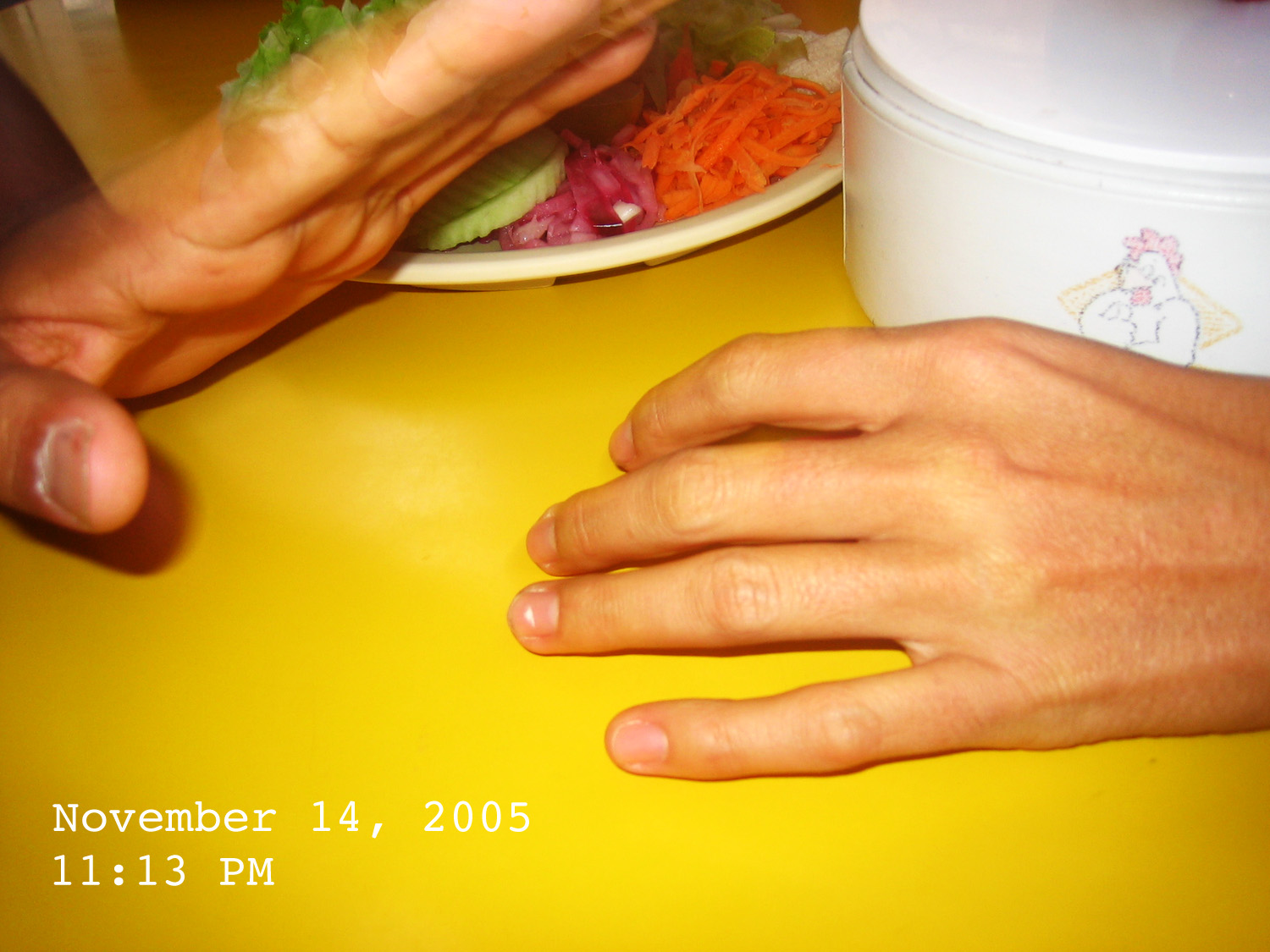
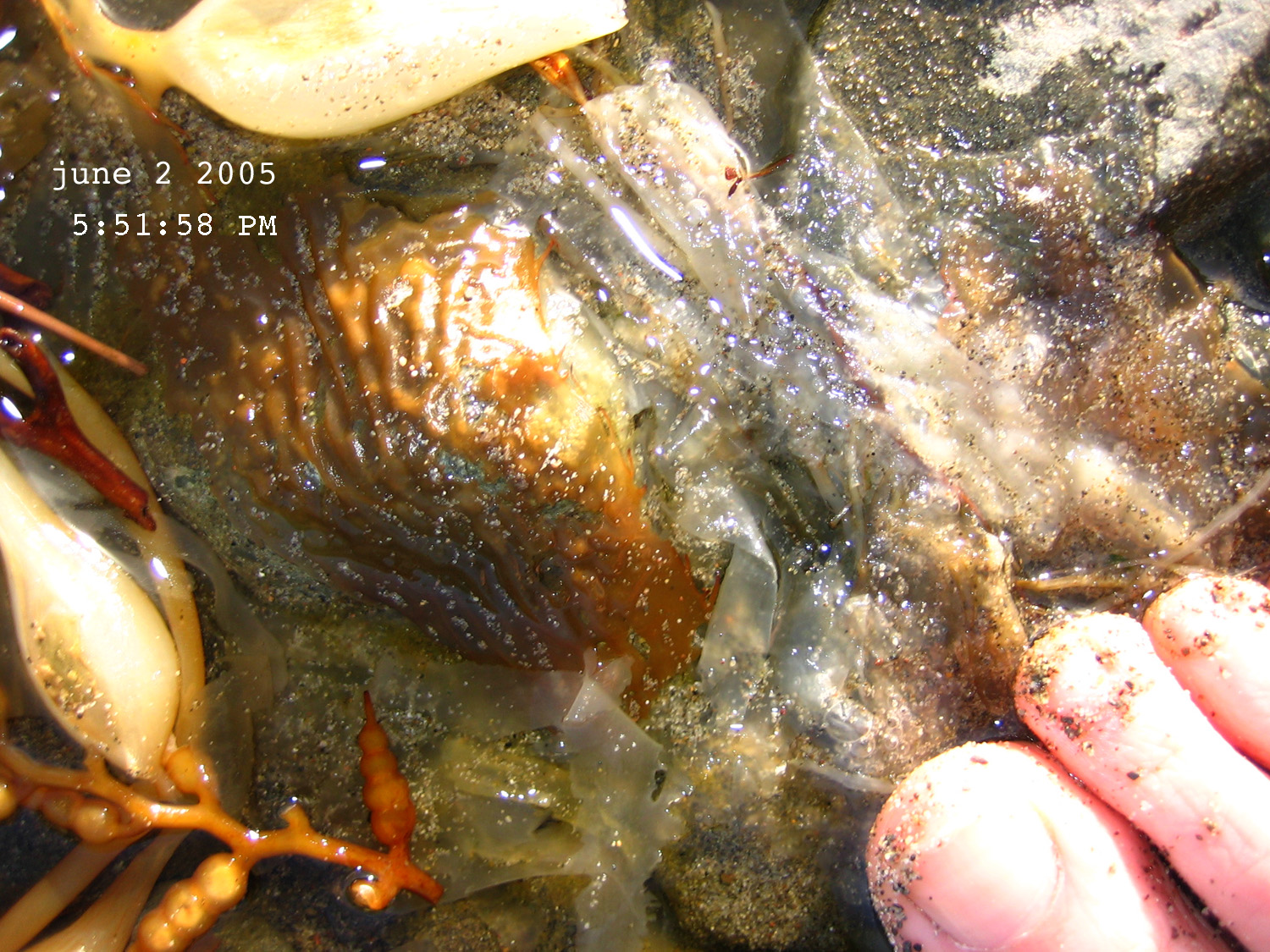
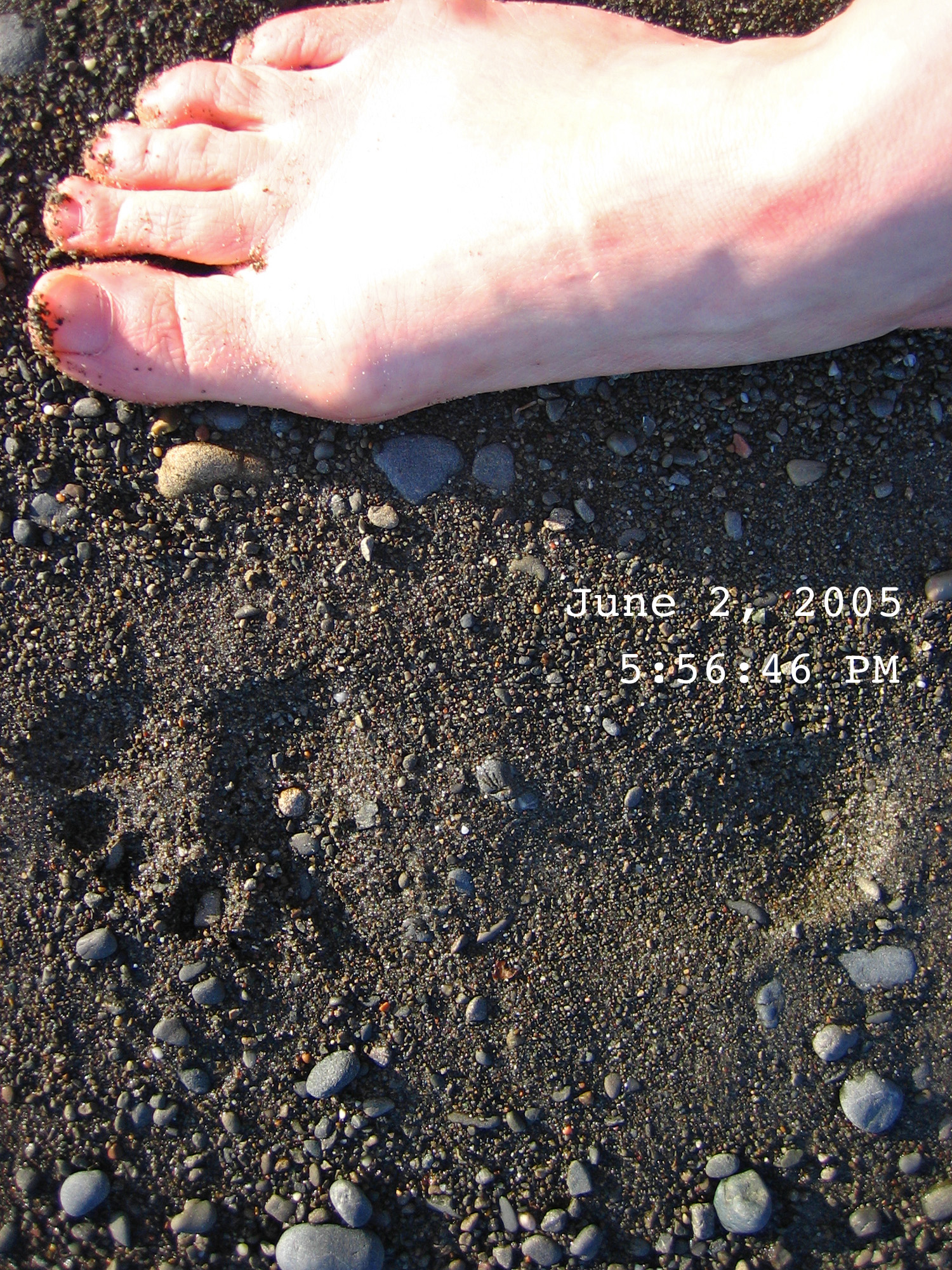
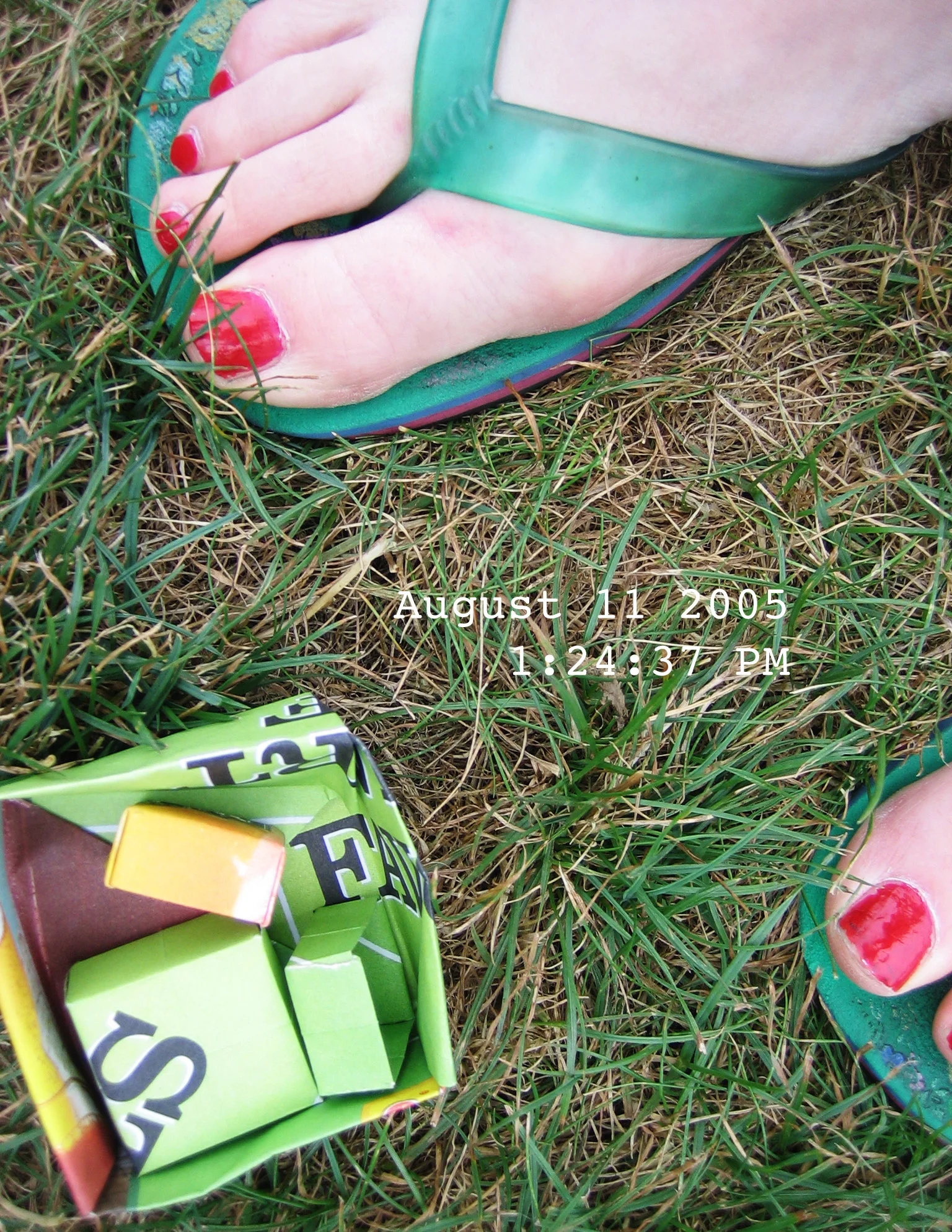
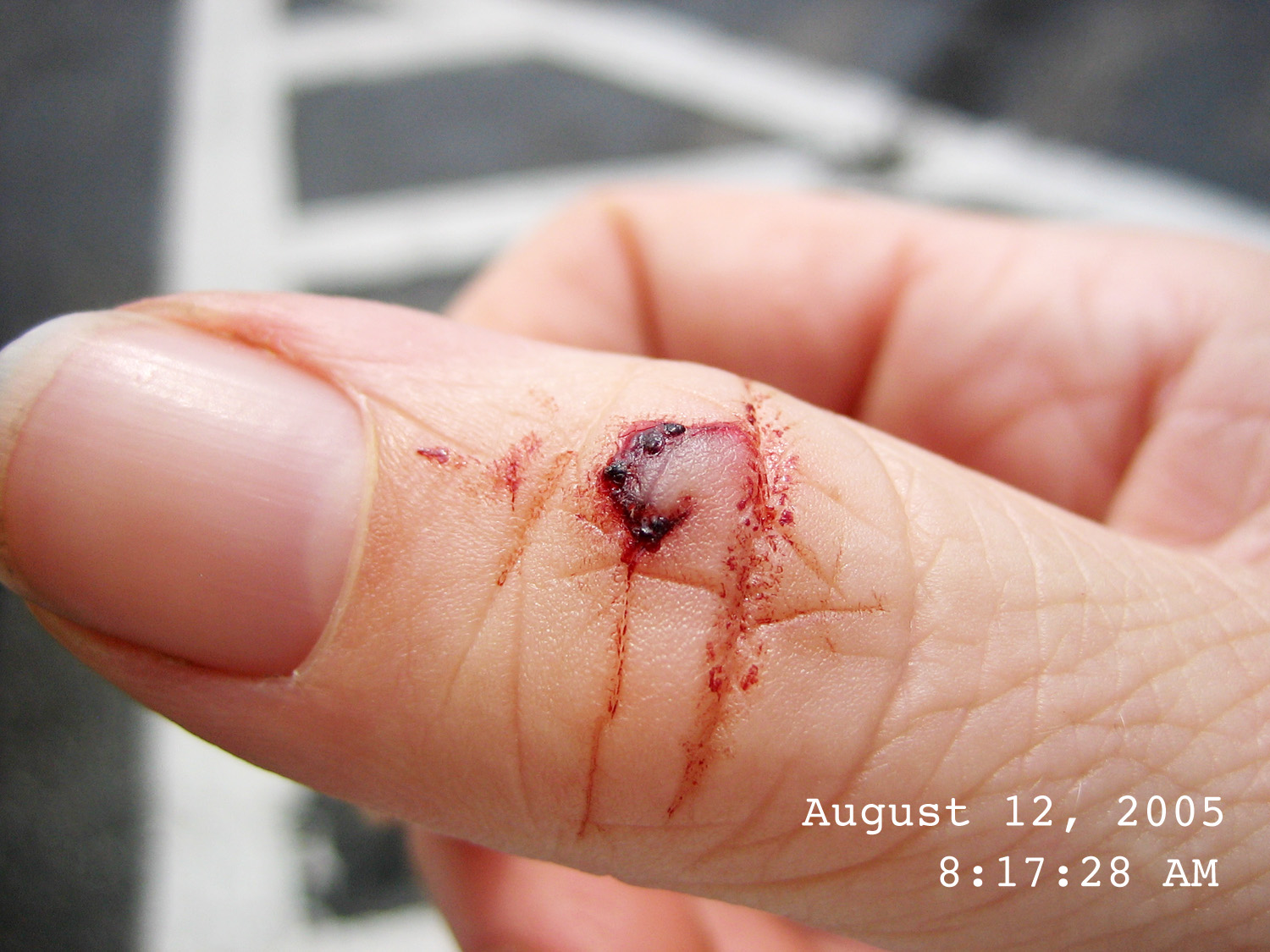
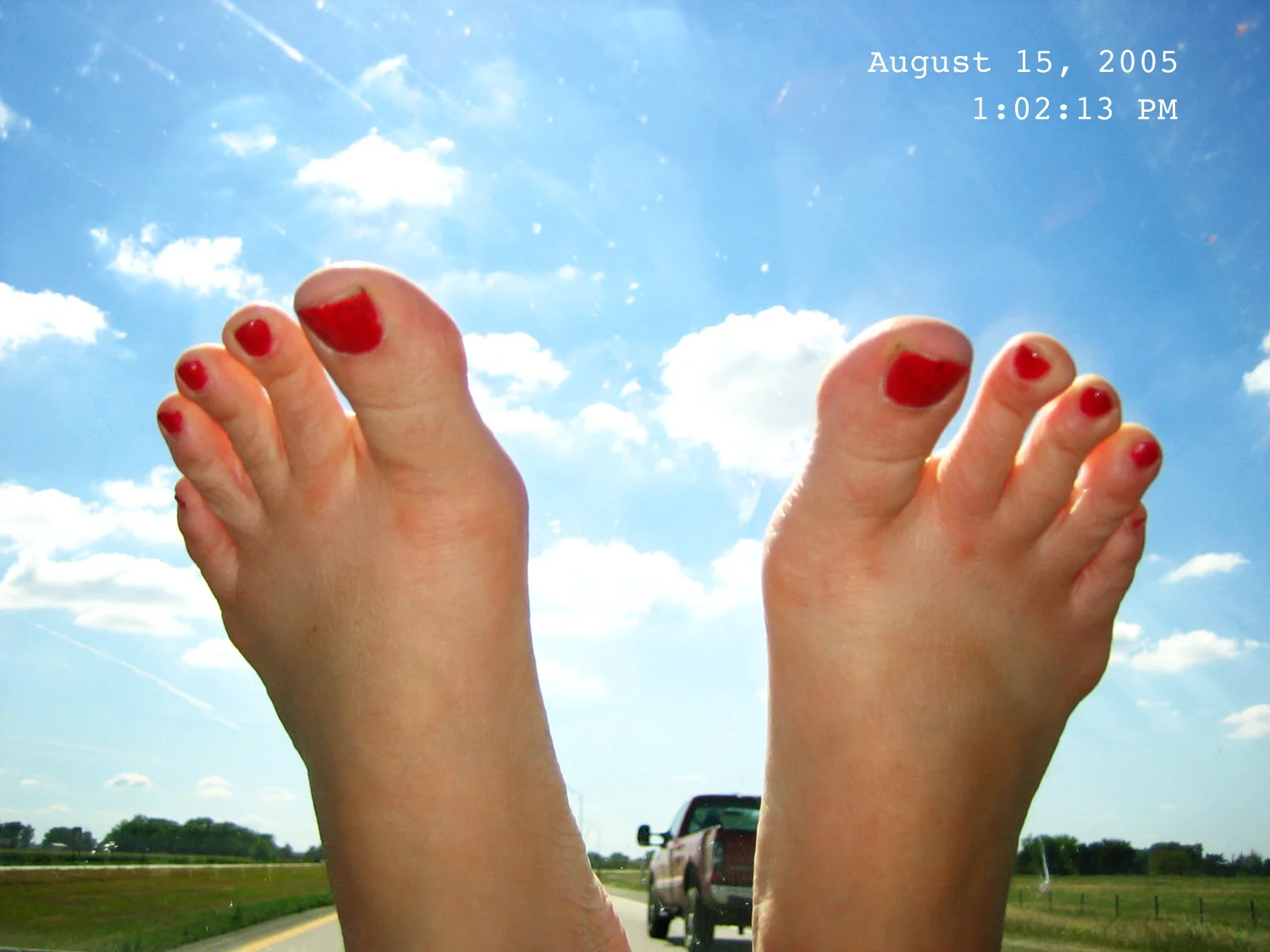
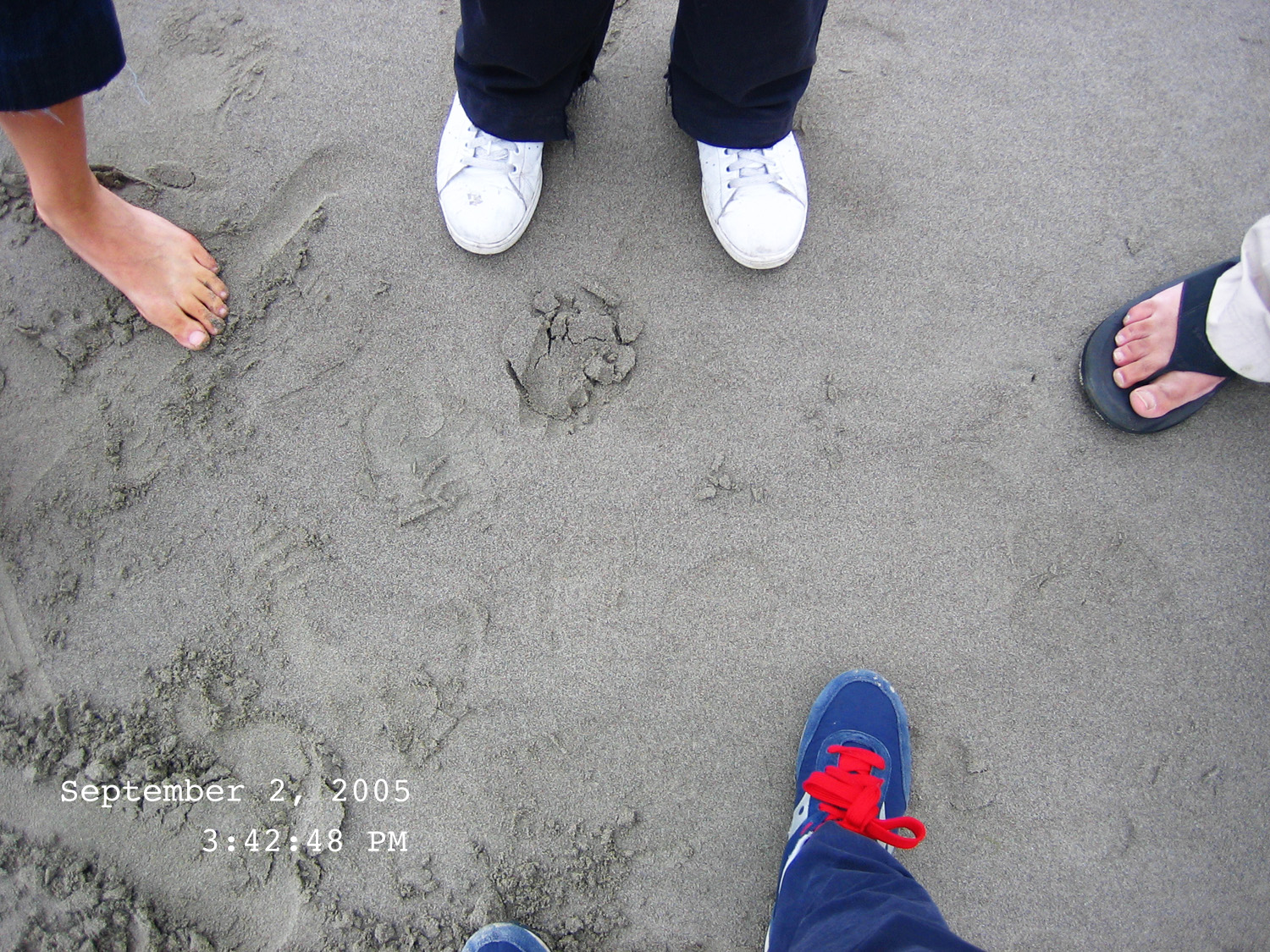
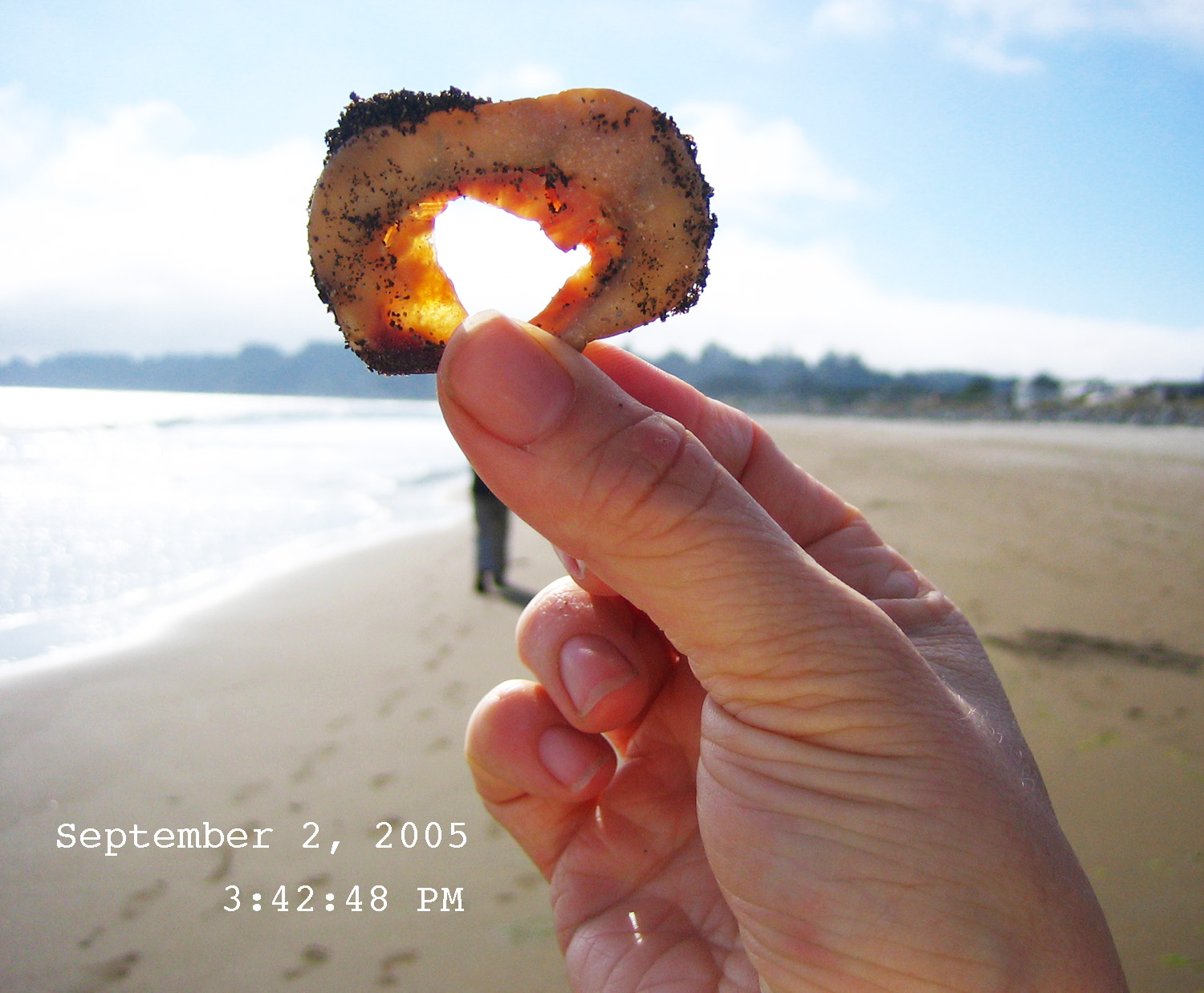
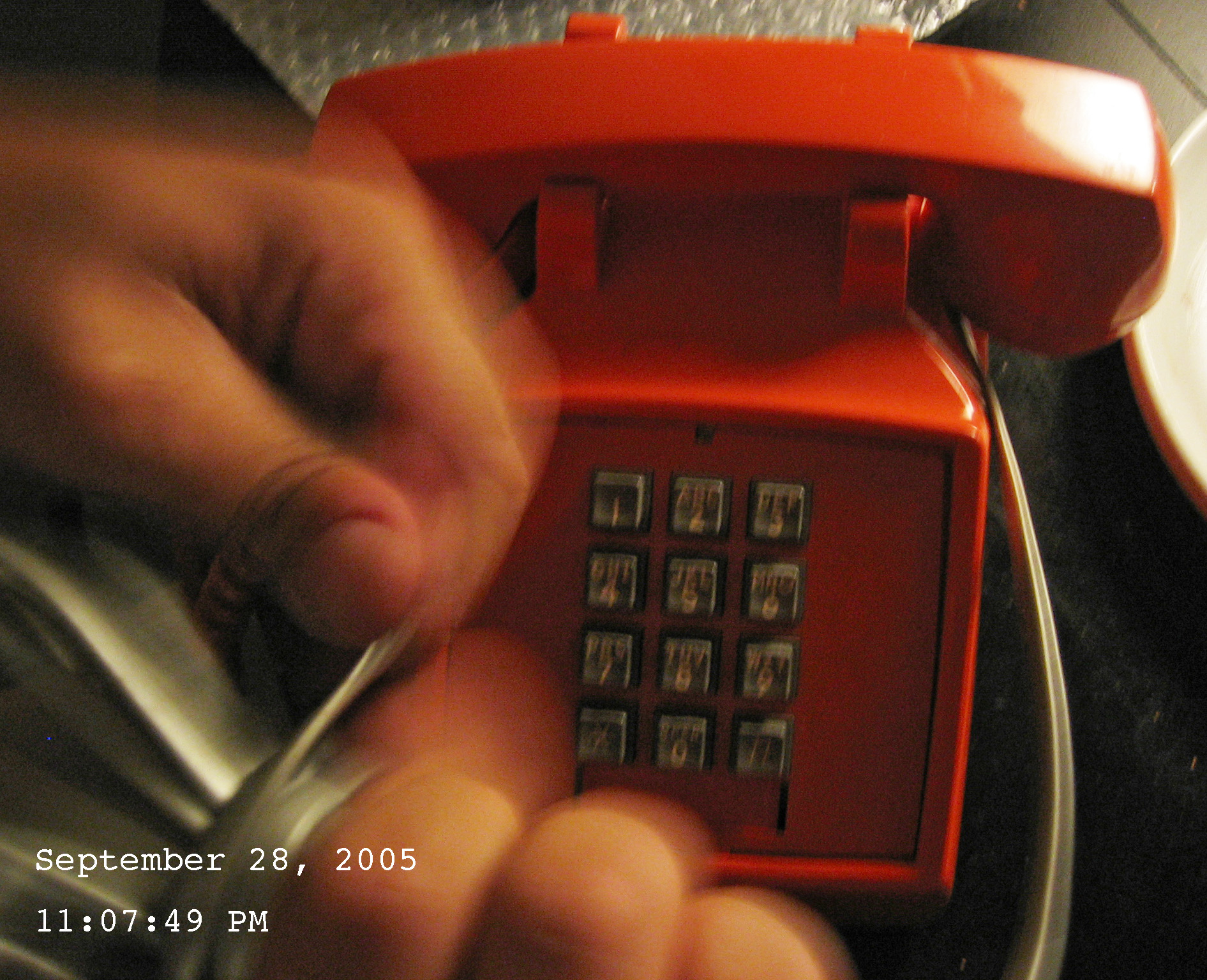
You don’t really know someone until you can picture their hands and feet in your head.
To be continued...
How did it get this way?
The freedom is inside, the outside is a mess. The life I see before me is not the life I ever imagined. It surprises me daily with its fiction, its ability to tell stories.
ZOELAB DAY 52
The freedom is inside, the outside is a mess. The life I see before me is not the life I ever imagined. It surprises me daily with its fiction, its ability to tell stories.
Don’t worry about me. I’m okay. I still have nothing. And that’s everything. Embracing what I don’t like is a new exercise that brings the same kind of comfort that rocks bring.
A transformation from city mouse to country mouse where the city mouse lives inside the country mouse. And this little mouse is busying herself. She is still making her nest. She’s surprised at how long it takes, by how far she has to go to find the right materials. She busies herself and then she rests. She rests for days. And after the dreaming, she is back at it again.
How strange to have lived a life so far away now. How beautiful to be suspended between memory and newness. How comforting to rediscover beauty.
It is said that deliverance is dead. I say let death deliver us.
Let us be delivered. Let us be returned to our own hearts who cannot hear unless they are heard. And cannot be heard unless they hear.
Inspiration from Children's Books
Aesthetics are the language of our soul. When we are children, we are living closest to our souls. I think this is why books or music from our childhood continues to have such a powerful impact on who we are as adults.
ZOELAB DAY 19
The artwork from children’s books has always captivated me and has had a great influence on my aesthetic. One of the great pleasures of parenthood is getting to reenter and share the incredible world children’s books with my child. Luckily, Emilio loves books as much as I do, and loves a lot the same ones. I am also lucky that my mother was kind enough to save my favorite childhood books. Most of which are in their house for Emilio (and me) to read when we visit. Three of which I have removed from their home (sorry mom) and have scanned tonight to share with you.
Illustration from Where the Wild Things Are by Maurice Sendak
There is an ineffable quality that children’s book illustrations have. There’s a sweetness because of the innocence and hopefulness that they convey, and yet at the same time, there is a darkness too, a sense of a larger, mysterious world somewhere lurking. Maurice Sendak illustrates this dichotomy so well in his books.
Illustration from I am a Bunny by Richard Scarry
This was Lucas’ favorite childhood book, which I didn’t have as a child, but have come to love as an adult. It’s illustrated by Richard Scarry, who was also one of my favorites as a child (as he is to so many). But here, his illustration style is more painterly than the more cartoonish style for which he is known. This is my favorite page from the book--someday I want to make a light box out of it and hang it in our house.
Illustration from Goodnight Moon by Clement Hurd
This book is a classic of course. The images are still so haunting to me. Again, the dichotomy: the innocence of a child’s play room juxtaposed with the darkness of night approaching. And the colors are so unusual and otherworldly.
On an aesthetic level, this was my favorite book of all. It was given to me by my grandmother, Nana, whose first husband, my Dad’s father, was a communist. The book was published in China in the 1970’s. It was perhaps the instigator to my affinity for Chinese aesthetics and culture (which led to eight years of Chinese language study, and living in China for a semester of college.) The book contains several tales with no words (other than the title) teaching children how to be cooperative. I remember how much the book enchanted me as a child. There was something about the drawings-- the colors, the line quality, the utter cuteness of it all. My love of this book is so special, that I have never been able to adequately qualify it. It was as if the book had been made just for me.
I have come to believe that each of us has a unique aesthetic that expresses something about our soul. Aesthetics are the language of our soul. When we are children, we are living closest to our souls. I think this is why books or music from our childhood continues to have such a powerful impact on who we are as adults. The best way to inspire ourselves, is to inspire the children we once were/still are.
Eleven Years
The faces show that our hearts have expanded to show how death has always been part of us.
ZOELAB DAY 11
It was one of those days where you remember where you were, what you were doing, who you were with. Eleven years ago today: it was a few minutes after 9 AM, and I was coming out of the 2/3 Wall Street Subway stop and I looked up and noticed pieces of paper falling through the bright blue sky. It was a surprising sight. I continued to walk as I looked up. I thought maybe the paper was ticker tape, related to the mayoral democratic primary that was to happen that day. But somehow, I also knew that it wasn’t. That it meant something different. I thought to myself “I’ll always remember this moment,” not knowing what it could possibly mean. I arrived to my building, 120 Wall Street. The building was an anomaly, the non-profit building of Wall Street. I found out later by pure coincidence I had two friends who worked also at two different offices in that building. As I entered, it became clear that something was going on. Someone was crying in the elevator. Once I got to my office, the headquarters of the organization Jewish Child Care Association, I found out what had just happened. A plane had hit the World Trade Center. How could that be true? It seemed impossible. We turned on the television. It was true, and then another one hit. And then one collapsed. And then the other one collapsed. Each one was unbelievable all over again. Panic hit me. I got a few phone calls from friends and from my mom to check to see if I was okay. Looking out the windows, the streets were covered in gray ash. People ran into the lobby of our building to take refuge. No one knew where it was safe to be. Nowhere felt safe. I couldn’t decide what to do, where to go. Should I go downstairs? Should I go home? It seemed absolutely wrong to go outside, to walk over the bridge, back to Brooklyn. And yet, after hours of waiting, a small group of people from my office convinced me to walk over the bridge with them. It didn’t seem like a good idea, the bridge felt like a target, and yet, what else could I do? My cousin called, who was in Brooklyn, and he agreed to pick me up on his Vespa on the other side of the Brooklyn Bridge. I walked in my small group, thousands of others were walking too, making our pilgrimage to the bridge. Everything was covered in the gray ash. We walked slowly. There were no cars. We made it to the other side. My cousin was there, and rode me home to my uncle’s house, where his wife was waiting with pasta and wine. We all drank and talked manically. I slept at their house that night, in the basement apartment. It was best not to be alone. When I woke up the next morning, the nightmare was still inside me. It was a collective nightmare. Some lived it much more closely and still do. Everyone looked for love wherever they could find it.
Several days later I wrote this:
Finally a place to rest my weary decade-ridden head. I rise and wait for further cities to burn. But we all hear the same song. I don’t mind if you sing, but please remember to drink clean water and not to blame time. Time is always the same. I thought I was born in the wrong time: time (who is older) has proven me wrong.
I am older this week. I am centuries old. Like the rabbi said, I see the face of god in the faces on the subway. The space around them shrinks and turns gray, towards history. But the faces have the colors that painters see. The faces show that our hearts have expanded to show how death has always been part of us. We are older now, but really, we have always been older. We just didn’t see a use for it. Now we have many uses: to walk, to light candles, to dig, to share our own blood, to sing old songs, to embrace ourselves by embracing others.
I am swollen with grief but I am alive. I burst daily in little ways. I try not to hide from the symbols that alienate me. I try to look beyond symbols,beyond unnatural boundaries, beyond fearful unity. I look instead for truth. Every symbol contains a lie. That is natural. But what is left that does not contain a lie? A tree. A dog. A sister. A dance. An office. Perhaps all things contain lies, but to see purely is to see myself in the face of the world. Whether it is ugly or beautiful. All things are both ugly and beautiful. That is truth. We knew this before and now we realize this. I realize this: to be useful takes me on a journey. At one time, I felt my life was stagnant and I was stuck under heavy fallen walls. Now I see that every moment can be a journey and those walls are fear of those journeys.
At a time like this people feel humble. They feel they have suffered less than others, they feel their words and actions are inadequate. People even feel guilty, ashamed of having any petty thoughts, any thoughts other than thoughts of victims. I say it is a time to be as big as possible. To appreciate the words and thoughts and art and breath and life we do have. To say I am not humble, I am human. Anything we do can be important, if we do it with care, thought, truth, strength, courage, love... there are so many people in this world, we all count for something. Unspeakable acts have happened before and they will happen again. It is time to start realizing how our actions affect others, even those who live in other countries who speak other languages who believe different ideologies. It is time not to shrink, but to expand. The more we expand as people, the more people will remember what is to be human. At a time like this, people feel sentimental, they generalize in order to feel better, in order make sense. People are ready to rush to judgement; they call others evil; I don't think I believe in evil. I think I'd rather believe in something a little more human. Evil relates to god, to the devil or god's enemy. It is hard for me to find solace in god at a time like this I know that others need that, and that is fine. But I hope that their connection with God eventually leads them to other beings here on earth. I hope religious leaders are able to help people with that connection. God is important in the way all things are important: plants, humans, dogs, houses, mountains, dirt. If we see god in these things that is fine. But if we see only evil in other human beings then we don't understand them. We have failed to try to educate ourselves. I hope that everyone feels the joy and beauty as well as responsibility of being a person born on earth. I hope everyone who is fortunate enough to have access to education and communication takes advantage of these blessings and passes them on in whatever way they can. The way in which they choose to pass on their humanity, that is the joy and beauty of life, the importance of this act, that is the responsibility of being human.
On Inspiration
To be an artist one needs to have courage, discipline and an ability to express truth. But to be able to continue to be an artist, one needs to be inspired.
ZOELAB DAY 2
To be an artist one needs courage, discipline and an ability to express truth. But to be able to continue to be an artist, one needs to be inspired.
I also believe: if you want to be an artist, you already are.
Stubbornness helps too. I learned this from a lecture given by Anaïs Nin as transcribed in the book A Woman Speaks, published in 1975. She wrote about how a liberated woman has to be stubborn in order to live the life she really wants to live in spite of the cultural resistance. Anaïs Nin has been an inspiration to me--her intelligence, courage, intellectual curiosity, androgynous mind, aesthetic sophistication, and passion for the arts. I often remember this idea--the importance of being stubborn as a positive thing, as the great protector of the true self, so that your unique voice can be heard. When no one would publish her experimental novels she started her own printing press and published them herself. To continue to be an artist, this is the kind of spirit that is needed.
Last night I was inspired by Bob Dylan. My husband Lucas just happened to put on No Direction Home, the documentary about Bob Dylan that cuts back and forth between two stories: his story from the beginning, which especially focuses on his musical influences, and then footage of one of Dylan’s concerts when he first went electric. His folk fans felt angry and betrayed by his turning to rock-n-roll and had no problem expressing it. When he performed, he had to block out the audience’s boo’s. He had to believe in his right to make the music he wanted despite the lack of support he received. He was being stubborn.
The last time I watched this same documentary, six years ago, was the night before an important performance where I was to share my quirky, imperfect rock songs with my classmates in graduate school. It wasn’t a music class, but a class about the power of the arts in the context of Expressive Arts Therapy. I have always appreciated music deeply, and play guitar, write songs and sing, but I am very insecure about performing music in front of others. Watching Bob Dylan shrug off the booing of his supposed fans had a powerful impact on me. I realized that I couldn’t let my inner critic who was worrying about other’s judgment prevent me from sharing my music.
When it comes to being an artist, or to self-actualizing in any way, you do what you need to do. So what I did was bring some outfits so I could do a costume change, I experimented with playing a character. I got through my fear with play and performance. That’s what Bob Dylan does, he plays the character in the song. Or the character he’s inspired by in that moment. That’s what being creative is: use of self. The archetype/sub personality enters when it is called for.
Last night it was the younger, visionary Bob Dylan that inspired me. He inspires others because he is inspired. He was inspired by Woody Gutherie, Odetta, and many other artists, and by his desire to tell stories. He helped me to realize you owe it to yourself and the world to be who you are, and not to hold back. He had a voice he believed in, even when others didn’t. It is not up to us to question our voices. It is up to us to get our of our way so that the voice can be heard.
When I was studying acting, I was very passionate about the Meisner technique. Joe Anania, my most beloved acting teacher, would call out to us while we did our repetition exercises “trust yourself!” and “get out of your own way!” I still hear his dramatic voice in my ear when I need to. Luckily his voice is loud and can sometimes drown out the critic’s.
Last night, after my first day of publishing ZOELAB, my inner critic had a lot of negative stuff to say about it, as he (my inner critic happens to be male) often does when I put myself out there, perform or take up space. (In this case I am taking up webspace.) I even considered shutting down the whole project. But after watching Bob Dylan, I realized this project is something I have to do. Sure it’s scary, and vulnerable, and I have no idea what it will be like or how it will be received, but I have come to believe all worthwhile things in life start out kind of scary, and usually end up being a lot of hard work, but if I commit to it, with all that I can, the satisfaction and growth that comes from it is well worth all of that because it takes me to somewhere new.
As I wrote in my commitment statement, I want to be inspired and inspire others. According to the etymology dictionary, inspire means: "to fill (the mind, heart, etc., with grace, etc.);" also "to prompt or induce (someone to do something)," from O.Fr. enspirer (13c.), from L. inspirare "inflame; blow into" (see inspiration).” Inspiration also means breath. I like to think of it as an integral part of the creative process. In order to create you need to breathe in, fill the mind and heart with that which it loves, and then when you breathe out, you express that which needs to be expressed. A few years ago when I was trying to find a way to define myself as an artist, which felt and continues to feel, impossible, I came up with an idea of making a photoshop collage of the female artists that most inspired the kind of artist I wanted to be/already am, also reflecting all the creative outlets/media that I am most drawn to--writing (memoir in particular), music, (rock-n-roll in particular), comedy performance (improv and sitcoms in particular), social/experiential/performance art, filmmaking. I just realized there are no photographers or visual artists on there. Maybe I need to add one to the collage. I am also becoming interested in Marina Abramovic. I want to watch the documentary about her called The Artist is Present.
(POSTSRIPT: After learning more about Marina Abromovic. I would most definitely add her to this inspiration collage.)
Here is the list:
Anaïs Nin
Bjork
Carrie Brownstein
Tina Fey
Sophie Calle
Miranda July
Lucille Ball
Shawn Marshall (of Cat Power)
The image at the top of this entry is that collage, which I called Manifest Destiny. (Postscript: Later, upon realizing the negative connotation of the term, I changed it to Womanifest Destiny.) I put it on my wall and look at it and remember what I am inspired by and therefore why I want to be an artist. After all, if I want to be an artist, I already am. I am going to make Inspiration a theme on my upcoming Theme Page.
Tell me, who inspires you?





























